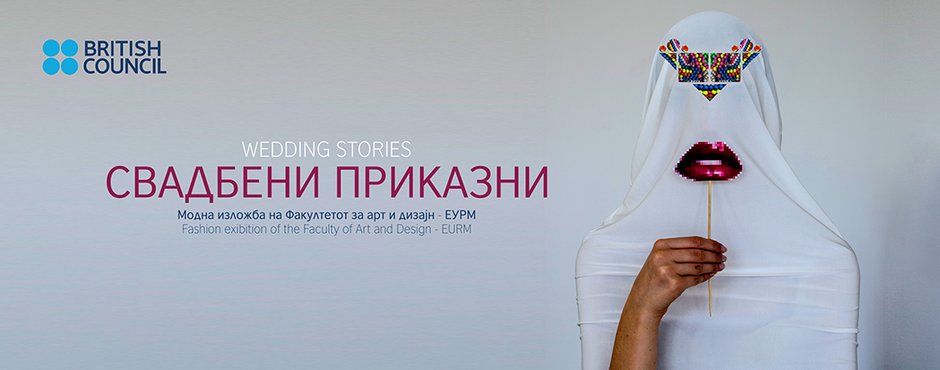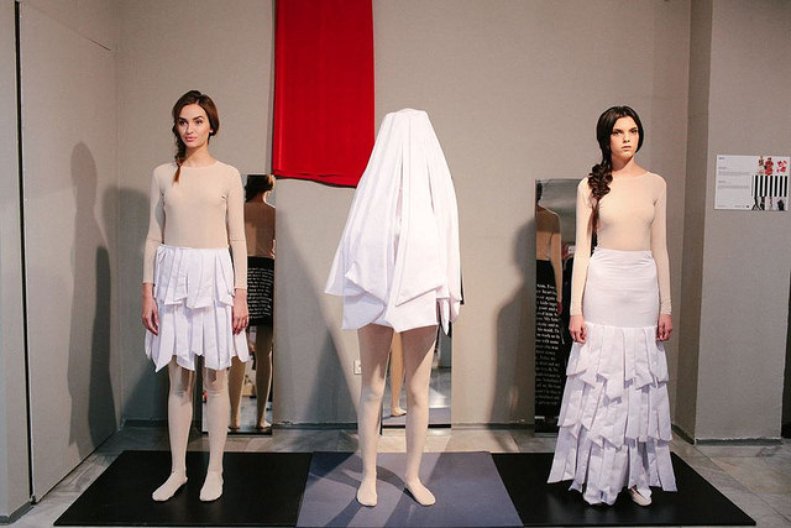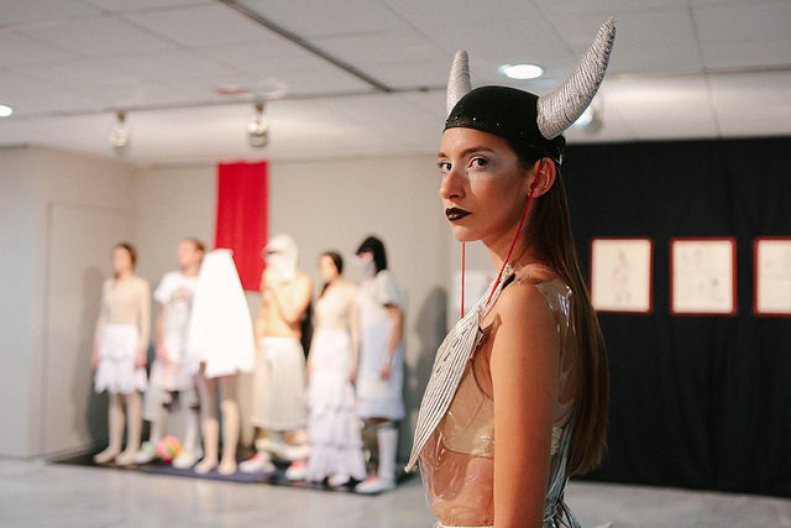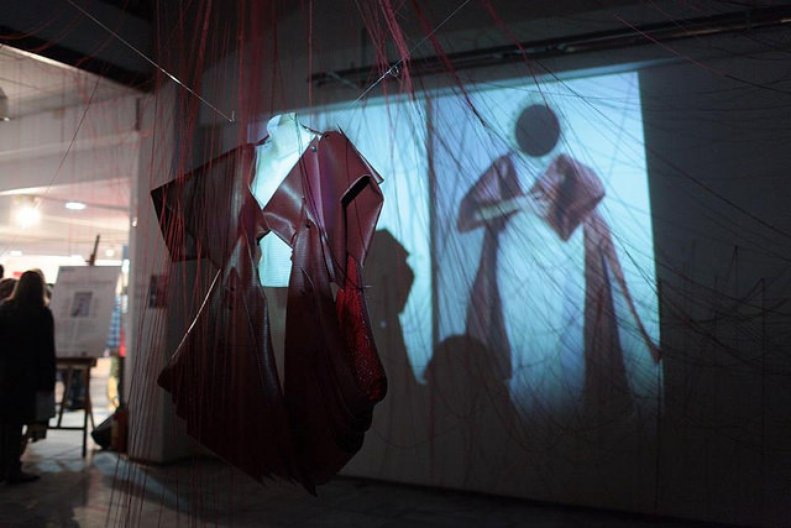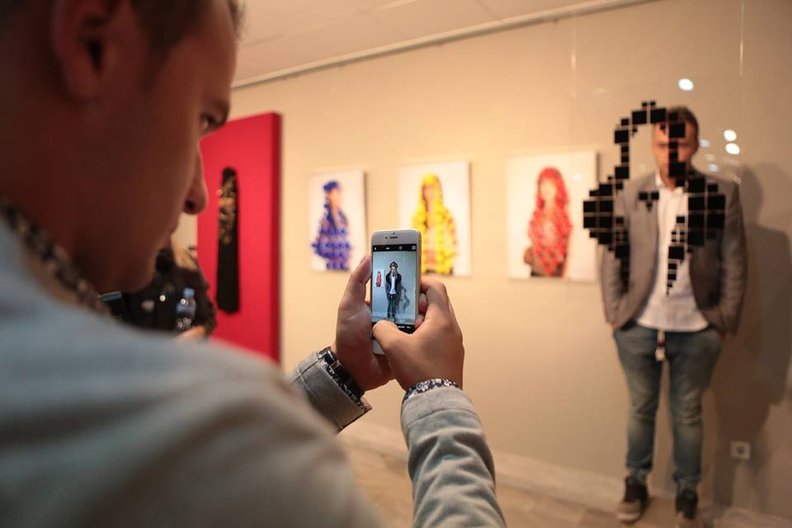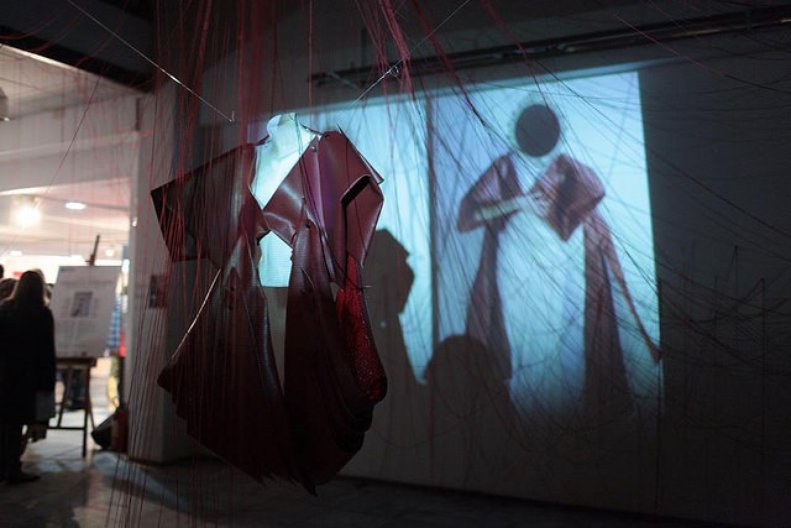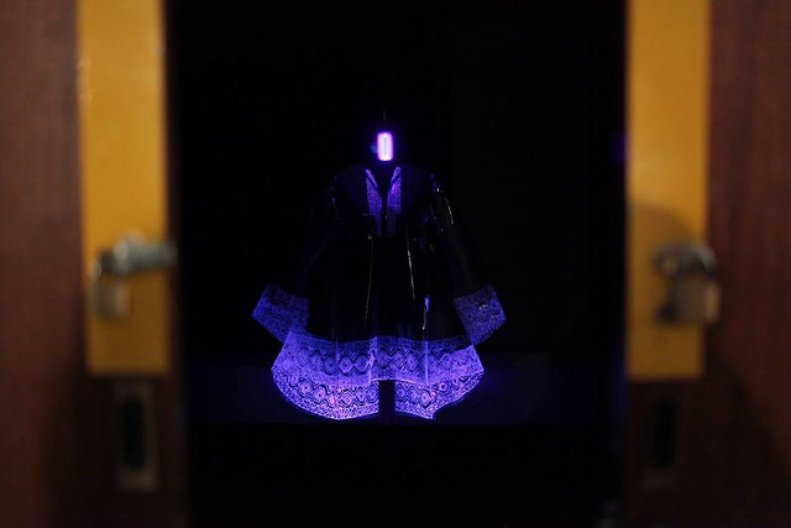7 December 2015
by Kendall Robbins
The British Council is pleased to be involved in the first collaboration between the Museum of Macedonia, European University - Republic of Macedonia and Fashion Weekend Skopje. The partnership came to a head this October during this autumn's edition of Skopje Fashion Weekend. Following a workshop on fashion curation and auto-ethnography run by UK lecturer and curator Susan Postlethwaite earlier in the year, students from the fashion, graphics and interior design courses at the European University worked alongside the Museum of Macedonia's curator Jasemin Nazim to explore the ethnographic collection and to produce new work in response to the histories and stories contained within the collection. The project looked to encourage a relationship between contemporary fashion and ethnographic dress pieces within the museum, and by placing contemporary fashion in the museum to create a cultural value and respect for it.
The final outcome was an exhibition titled 'Wedding Stories' which featured the final pieces created by the students and was designed by the participants from the graphics and interiors students under the guidance of Professor Gordana Vrencoska. The new pieces were juxtaposed with archive garments from the Museum's collection. Through the workshop, students discovered that the collection consisted mainly of wedding garments, and through this learned the rich and diverse history of weddings and the role of dress in these ceremonies in Macedonia. The work produced then explored weddings through the memories, family heritage, constraints of tradition, symbols of rituals and happiness, wishes and fictions related to their own history and how these relate to their contemporary practice.
The exhibition was the first contemporary fashion exhibition to take place in the museum and opened the events of Skopje Fashion Weekend. As a result of the collaboration, Skopje Fashion Weekend for the first time was hosted in the Museum of Macedonia's galleries with the fashion week theming their programme 'Fashion and Cultural Heritage.' The museum, situated on the edge of the Turkish Bazaar, was designed by architects Kiril Muratovski, Mimoya Tomić in the early 1970s during the reconstruction of Skopje by Japanese architect Kenzo Tange following the destruction by an earthquake in 1963. In the wake of the government's Baroque-styled Skopje 2014 urban regeneration plans, it was an important feat to also see the popular fashion event celebrating both the long ethnographic history of Macedonia but also the now neglected but phenomenal Modernist architecture of the Communist period. The overlapping programme and partnerships sought to demonstrate the important role ethnography and design play in culture.
The exhibition and fashion week events were also supported by an exhibition of fashion and dress publications at the National Library of Macedonia, and there are currently plays for the exhibition to travel to other galleries.
